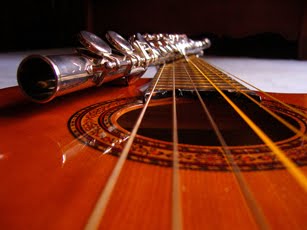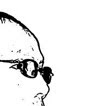 Formerly named Namacpacan (literally, “one who gave food”), Luna Town in La Union could very well be the epitome of Filipino hospitality of the Ilocano variety. The title had enshrined a trait that the Spanish colonizers recognized as expressed in return for a fee or as a form of service to visitors. Either way, the people are also an enterprising lot with many of them
Formerly named Namacpacan (literally, “one who gave food”), Luna Town in La Union could very well be the epitome of Filipino hospitality of the Ilocano variety. The title had enshrined a trait that the Spanish colonizers recognized as expressed in return for a fee or as a form of service to visitors. Either way, the people are also an enterprising lot with many of them  working as fishermen or farmers and several others diligently picking stones or pebbles under the searing sun to sell locally or abroad.
working as fishermen or farmers and several others diligently picking stones or pebbles under the searing sun to sell locally or abroad.The new name of the town owes its origin from the nationalist heroes and brothers Antonio and Juan Luna whose mother came from the locality. Antonio Luna’s statue adorns the poblacion (public plaza) riding a horse beside a simple, diminutive Arch of Triumph which could barely accommodate a car through. For a small unassuming town, the structure fittingly gave the hero-general the honor of having once lived in France during the 19th-century Philippine Reform period.
Visiting Luna recently came like a refreshing whiff of morning wind on a hot day.
 Eager to spend a couple of days at the beach, our barkada motored into the coast of La Union facing the calm South China Sea. After seeing daily heavy afternoon rains in Baguio, a wind-caressed, sun-filled vacation by the stone-matted beach of Luna was nothing short of a precious treat. And thanks to a gracious friend of a friend, we stayed in a dreamy cottage with coral reefs for its walls and loose flat stones for its flooring.
Eager to spend a couple of days at the beach, our barkada motored into the coast of La Union facing the calm South China Sea. After seeing daily heavy afternoon rains in Baguio, a wind-caressed, sun-filled vacation by the stone-matted beach of Luna was nothing short of a precious treat. And thanks to a gracious friend of a friend, we stayed in a dreamy cottage with coral reefs for its walls and loose flat stones for its flooring. A dip on the pleasantly warm sea came as a great surprise considering the total absence of sand. A sand-less beach! Never thought that was possible. No sand to clean off your ears or your pockets. The only minor problem came from those slippery stones under your feet, making it hard to walk straight. But the water was superbly clean and clear. Another thing that didn’t seem possible in this era of pollution.
A dip on the pleasantly warm sea came as a great surprise considering the total absence of sand. A sand-less beach! Never thought that was possible. No sand to clean off your ears or your pockets. The only minor problem came from those slippery stones under your feet, making it hard to walk straight. But the water was superbly clean and clear. Another thing that didn’t seem possible in this era of pollution.Lying with your face over the edge of the water while the wave rocked you gently, you could hear the round pebbles clinking and clanking in a melodious percussive chorus as the wave
 receded. The rhythmic action of nature had smoothened and formed rocks into slightly bigger than quail-egg-sized pebbles of various colors and mineral composition: granite, siltstone, conglomerate, silica and quartz. A veritable harvest of thousands of years of geologic process brought together at the shoreline where the land meets the ocean – mountain rocks broken down, reduced and polished eventually by weathering and erosion through the unceasing cycle of life-giving water.
receded. The rhythmic action of nature had smoothened and formed rocks into slightly bigger than quail-egg-sized pebbles of various colors and mineral composition: granite, siltstone, conglomerate, silica and quartz. A veritable harvest of thousands of years of geologic process brought together at the shoreline where the land meets the ocean – mountain rocks broken down, reduced and polished eventually by weathering and erosion through the unceasing cycle of life-giving water.A few curious years of teaching college geology helped me truly appreciate that moment in Luna as a picture of the unified and encompassing physical forces that rule nature. And looking at the
 magnificently gold-painted sunset or rainbow-adorned morning skies, wrapped the continuing epiphany in a spiritual glow. Aside from creating the emotional high, the visit revived lost youthful imaginations of a pleasant and pristine Paradise -- a place in out hearts we know exists yet find so hard to keep in mind. Seeing it in its crude and fallen state allows us now and then to come close to its promise and certainty.
magnificently gold-painted sunset or rainbow-adorned morning skies, wrapped the continuing epiphany in a spiritual glow. Aside from creating the emotional high, the visit revived lost youthful imaginations of a pleasant and pristine Paradise -- a place in out hearts we know exists yet find so hard to keep in mind. Seeing it in its crude and fallen state allows us now and then to come close to its promise and certainty. 
At night, we brought out our bed cushions and lay under a moonlit and cloudy sky. It was an impossible task to sleep for it made me feel like a tiny crab on the ground, facing heaven and knowing fully well that God looked down from His majestic throne. His glory and greatness He shared through creation; and who couldn’t respond with worship? Truly, “the fool has said in his heart: There is no God.”
Worship has not felt so great and complete for a long while until that time in Luna, La Union.


No comments:
Post a Comment